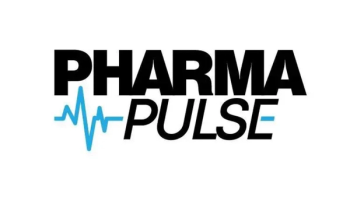
Fixing the Pharma Pricing Puzzle
In the final part of her Pharma Commerce video interview, LeAnn Boyd, Liviniti’s founder and CEO, describes what meaningful drug pricing reform looks like to her.
In a video interview with Pharma Commerce, LeAnn Boyd, PharmD, Liviniti’s founder and CEO, discusses the deeper, systemic issues behind rising healthcare and drug costs that are not fully addressed by the MFN (Most-Favored Nation) executive order. She acknowledges that the healthcare landscape has seen incredible advancements in therapies that significantly improve patient outcomes and well-being. As more people utilize pharmacy benefits—rising from 50% to around 70% in recent years—overall drug spending has naturally increased. While greater access to treatments is positive, Boyd emphasizes that this doesn't fully explain the sharp rise in costs.
She views the MFN executive order as a useful initial step—a spark that brings attention to the issue, especially considering that the US pays significantly more for medications than other countries. However, Boyd expresses concern that the order lacks the depth needed to address all the systemic contributors to high drug prices.
A key issue, she argues, lies in the misaligned incentives within the drug pricing ecosystem. Many stakeholders, such as pharmacy benefit managers (PBMs) and other intermediaries, have compensation structures that are tied to the list price of medications. This creates a perverse incentive to favor higher-priced drugs, as higher costs directly translate into greater profits for these players. As long as stakeholders are financially rewarded based on drug prices rather than patient value or outcomes, upward pressure on prices will persist. Boyd concludes that unless these incentive structures are realigned to reflect value-based compensation, rather than price-driven earnings, any reform—like the MFN rule—will fall short of creating lasting change in the healthcare cost landscape.
Boyd also comments on how PBMs will be significantly impacted by the EO; why PBMs that operate on flat admin fee model rather than rebates create more transparency and value for both payers and patients; what meaningful drug pricing reform looks like in her view; and much more.
A transcript of her conversation with PC can be found below.
PC: What would meaningful drug pricing reform look like to you?
Boyd: Number one, it has to be comprehensive. This is a very complex pricing system that we live in, and as I mentioned, there's a lot of different stakeholders along the way. You have to address drug pricing, from the group purchasing organizations (GPOs), which control a lot of the manufacturer rebating arrangements, the GPO arrangement with the individual PBMs that they're supporting, and the PBMs that have dispensing pharmacies, whether that's specialty mail retail pharmacies, as well as care.
You have to make sure that this reform is comprehensive enough that eliminates any shifting of the economics from up, down, left, right, backwards, forwards, and just truly play it straight. The cost of the drug is the cost of the therapy, and it's passed through down to the people that are paying for the drug, which is the plan that's supporting them, and the member themselves that's contributing not only co-pays, but also premium dollars into these plans. To me, it's real-time pricing information, so everybody can be informed: consumers at the time that they're getting a therapy prescribed to them, so they can make the right decisions for them, individually in connection with their doctor. Right now, regarding that pricing information, a patient does not leave the doctor's office, nor does the doctor typically know what it's going to cost that patient until they get to the pharmacy counter, and then everyone's working in a very reactive retrospective process that creates disruption, frustration, and friction for that individual patient.
How do we help patients at the point of prescribing in a more informed manner to make these decisions? You have to have real-time, transparent pricing information, and those same stakeholders that benefit from linking their revenue to the drug cost also benefit from keeping that information pretty much under wraps, and it makes it hard to get to that true cost of therapy at the point of prescribing.
Newsletter
Stay ahead in the life sciences industry with Pharmaceutical Commerce, the latest news, trends, and strategies in drug distribution, commercialization, and market access.





